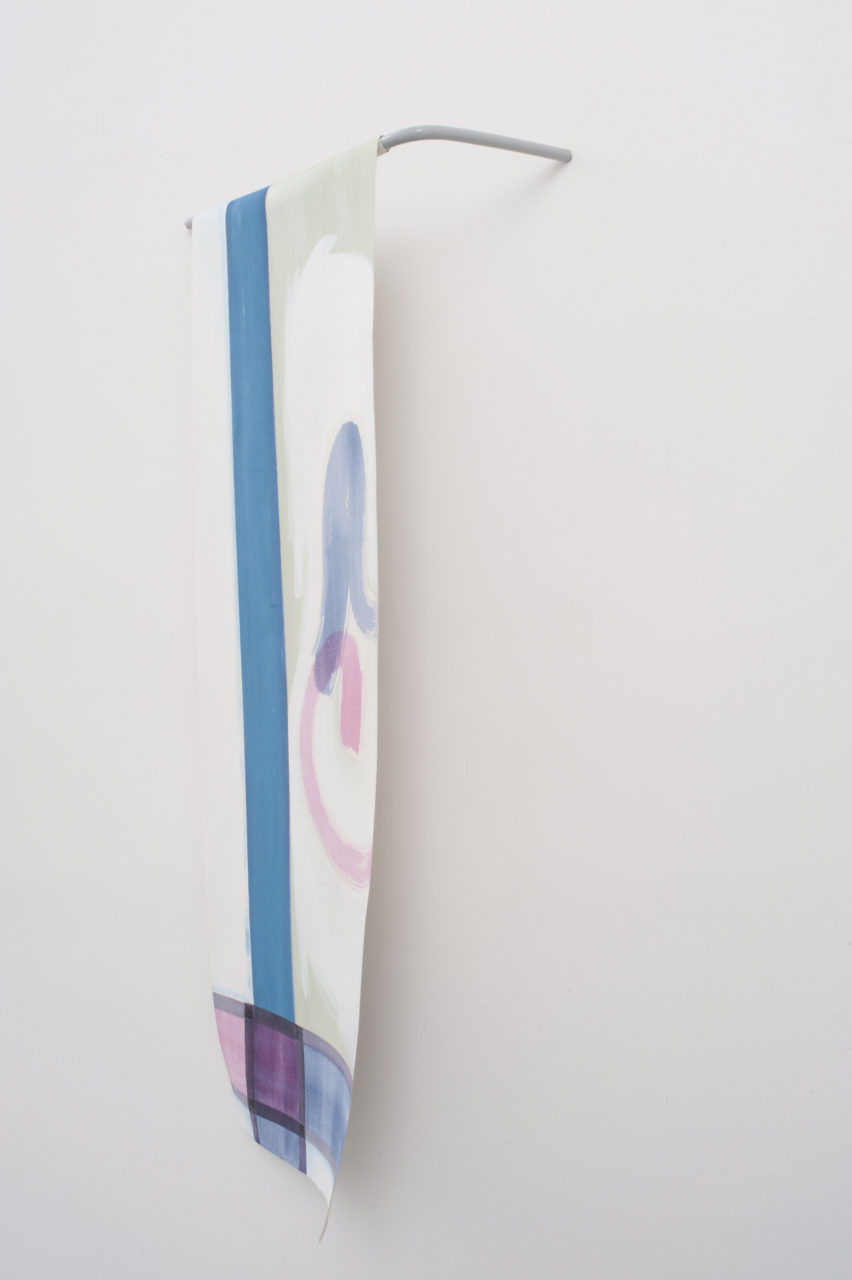Prohra, Karlin studios, Praha, 2017
Lze číst několikrát záměrně vyprázdněný vzor „současné malby“ sociálně? Autorka ve své práci Prohra reaguje na současný zombie formalismus. Ten se skrze vědomé reprodukování malířského gesta stává konformním komentováním současnosti. Ve svém hojném bujení gest vystavuje a množí abstraktní formy nejen v malbě, ale i na poli tržních spekulací s uměním.
Martina Smutná používá vzory na utěrkách jako možné vizuální reprezentace práce, jež sama své vlastní obrazy neprodukuje. Reproduktivní práce na rozdíl od práce produktivní neústí do zboží či služeb, jež by měly v kapitalistickém systému peněžní hodnotu, a tudíž není často viděna, natož ohodnocena. Jak soukromé tak i veřejné instituce spoléhají podle Marxistického feminismu na laciný stereotyp přirozeně pečující ženy jako na možnost zisku. Reálie sociální situace a pracovních podmínek, inspirované příběhem pradleny ze státní nemocnice, prosakuje napovrch pří práci na obrazech.
Lucie Rosenfeldová a Matěj Pavlík
Loss
Karlin studios, Prague, 2017
Martina Smutná sees the patterns present in a household textiles as a possible visual representation of labour, which itself does not produce own images. Reproductive labour, in the comparison with the one that is productive, does not result in goods or services that have monetary value in capitalist system, and so it is not often seen, let alone evaluated. According to Marxist feminism, both private and public institutions rely on inexpensive stereotype of naturally caring woman as an option for profit. The context of a social situation as well as working conditions of a certain woman performing reproductive work becomes a kind of consciousness while working on paintings.
Despite links to abstract formalism, hanging-down paintings by Martina Smutná keep the residues of representation of the real. It is not an abstraction in its very meaning, rather an abstracted scene. The artist tries to uncover the process of abstraction as socially determined process, the abstraction itself then as an image of the social. Junction of the abstraction and realism is concentrated in the act of inclusion of the paraphrase on the Chardin’s painting of working woman, Le Bénédicité, into the series, and encourage us to search for connections between historical realism and contemporary abstraction.










